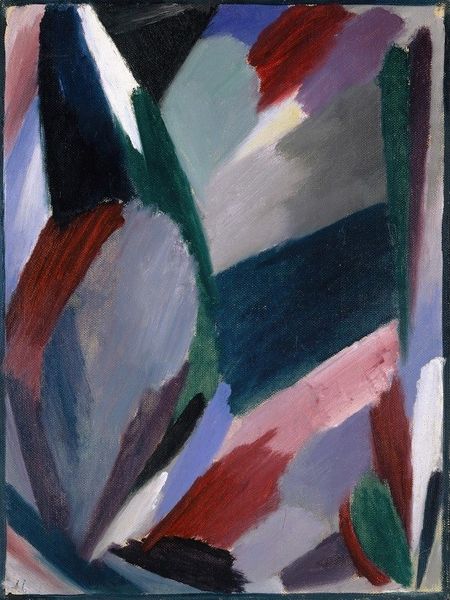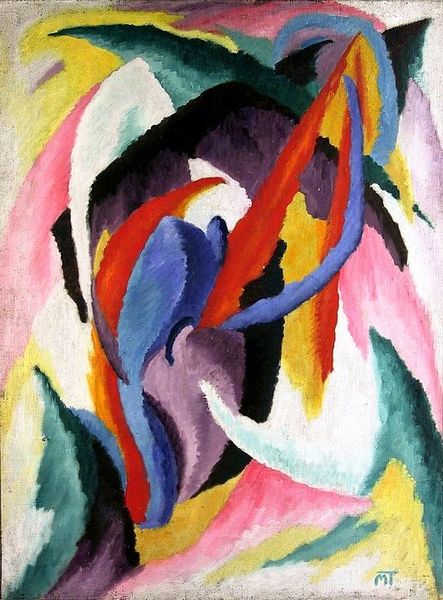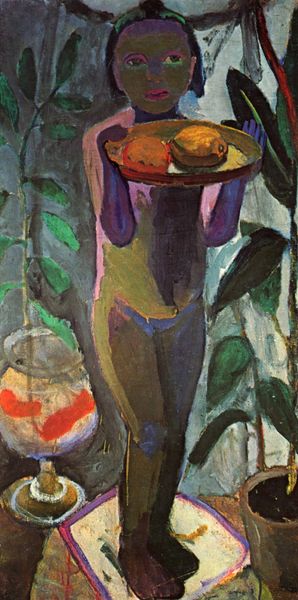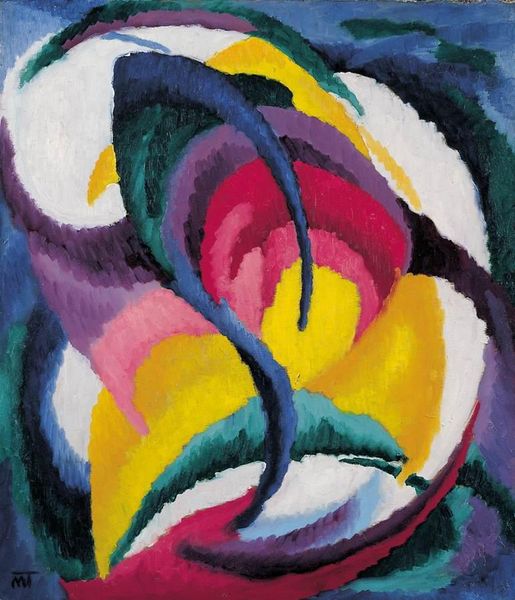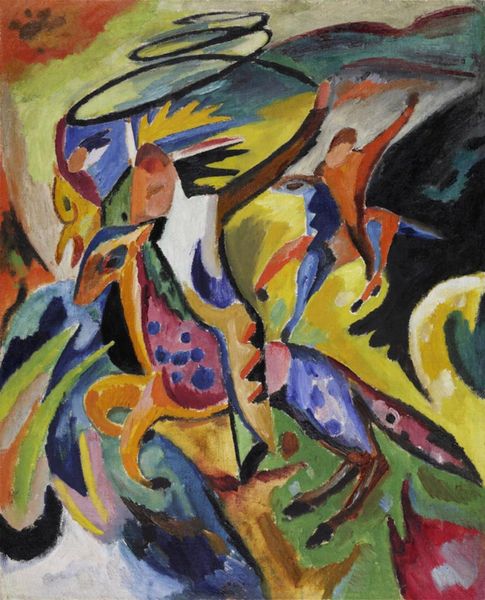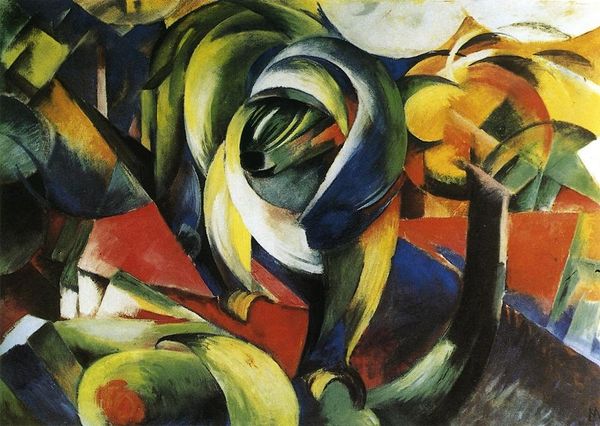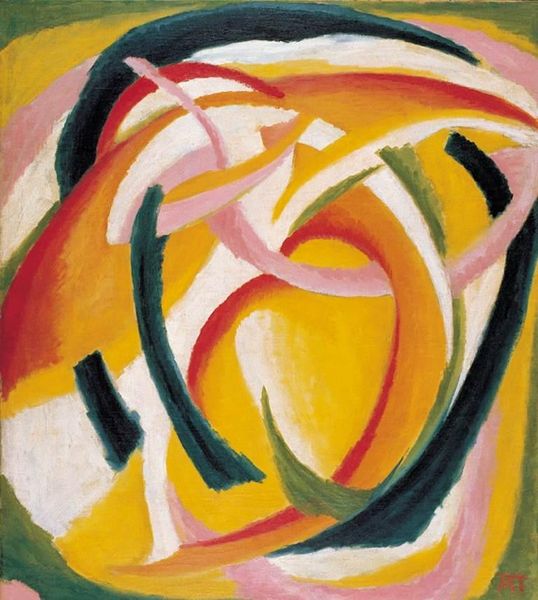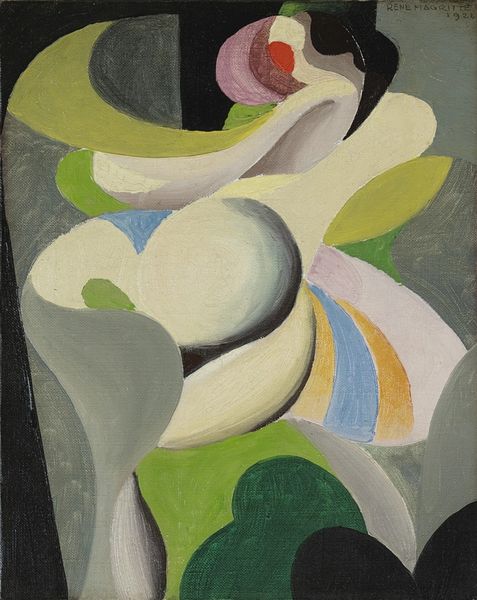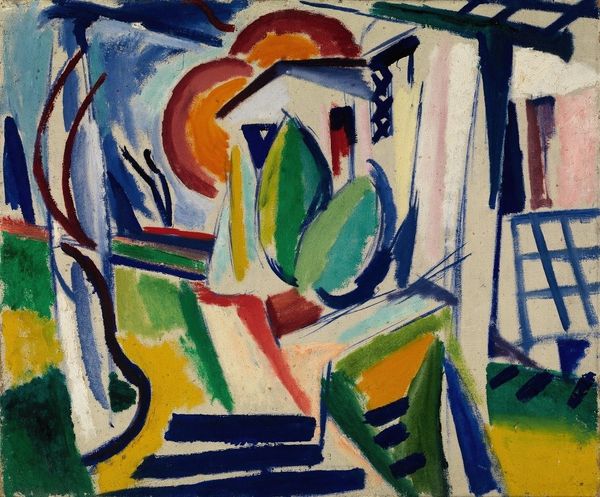
Copyright: Public domain US
Editor: We’re looking at Alberto Magnelli’s "Lyrical Explosion No. 12," painted in 1918 using acrylic paint. The piece is so dynamic and the colors feel emotionally charged. What story do you think this abstraction tells, and how might its creation in 1918 inform our understanding of it? Curator: Given the date, 1918, and the title, I immediately think of World War I. Magnelli was Italian, and Italy was deeply involved in the conflict. Abstraction, in this context, can be viewed as a rejection of traditional, nationalistic art forms, and an attempt to create a new visual language fit for a world undergoing unprecedented upheaval. Do you see how the geometric forms almost seem to fragment and reassemble? Editor: Yes, I do. So the "explosion" in the title isn't just lyrical, it’s potentially referencing the explosive reality of war. Did the art world generally embrace abstraction as a response, or was there resistance? Curator: There was definitely resistance! Many still clung to representational art as a means of propaganda and reinforcing national identity. Embracing abstraction during wartime could be interpreted as unpatriotic, a rejection of shared values and narratives. But Magnelli and others pushed forward, seeking a more universal language to express the human condition, transcending national boundaries. What impact do you think the Expressionist influence had? Editor: Well, Expressionism emphasizes emotional experience. Seeing the chaos of jagged lines and the fauvist color palette in “Lyrical Explosion” I get that emotional feeling...almost chaotic! I hadn't considered how radically political abstract art could be in that period. Curator: Exactly. The very act of creating non-representational art was a statement. Think of the patronage system at the time: what message was Magnelli sending, moving away from popular artistic expectations? Editor: So, what starts as something aesthetically compelling transforms into a politically charged cultural artifact. Curator: Precisely. That transformation illustrates how socio-political factors influence both artistic production and the interpretation of art itself. This certainly offers a new lens for looking at art. Editor: Absolutely. It’s given me a lot to think about. Thank you!
Comments
No comments
Be the first to comment and join the conversation on the ultimate creative platform.

